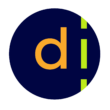With the growth in COVID-19 cases over the past few weeks, I have been thinking a lot about my work in global health, particularly Ebola, and how our work at the Digital Impact Alliance (DIAL) can help tackle the challenges facing country response today.
With the growth in COVID-19 cases over the past few weeks, I have been thinking a lot about my work in global health, particularly Ebola, and how our work at the Digital Impact Alliance (DIAL) can help tackle the challenges facing country response today.
For context, between 2014 and 2016, the global health community supported countries battling the Ebola epidemic. While the crisis primarily affected Guinea, Liberia, and Sierra Leone it spread to seven more countries: Italy, Mali, Nigeria, Senegal, Spain, the United Kingdom, and the United States. Later, secondary infection, mainly in a healthcare setting, occurred in Italy, Mali, Nigeria, and the United States.
For most of the Ebola crisis, I was the head of Digital Health Solutions at PATH. My country office colleagues needed help, but the tools my team focused on were not suitable for crisis response. My colleague, Kai-Lik Foh, was then managing the mHealth portfolio at the GSMA in London, where his team helped put together guidance to help development actors advance public health messaging services with mobile operators to respond to the crisis (principles of which still apply for COVID-19). We both experienced from different viewpoints the challenges which NGOs and mobile network operators faced working together to get basic messaging capability established to reach anyone with a mobile phone, across all networks, with basic health messaging. Striking these agreements was not an easy task and they took weeks to get established instead of hours. The reason was that NGOs did not fully understand available mobile messaging capabilities and which organizations could provide which services to meet their needs. Similarly, mobile operators struggled to communicate how their available capabilities and business models could address complex health needs. Because of this mutual gap in understanding, many of these agreements took some time to establish which meant that lifesaving messages didn’t quickly reach those who needed them most.
As DIAL started, we knew that there was a faster way to set up this messaging capability because we were all using the capability from a group of companies called mobile aggregators. Mobile aggregators are the middleman between an organization and the mobile network operator. They set up the services and contracts so you don’t have to, and they operate worldwide.
This means that today, you can get your COVID-19 response messaging set up simply and easily because DIAL has invested in research and tools that take the complexity out of the process. These are free and available globally to anyone and we have people able to help. So, if you are an NGO, where do you start?
First, you can access how (and whether) to work with aggregators, using this guide. Whether you decide to work directly with operators or through an aggregator, DIAL can also help you select the appropriate types of mobile channels you might want to consider in your public health messaging campaign through this tool.
Second, DIAL has developed an online catalogue that lists mobile network service integrators that provide mobile service delivery around the world and services offered. This resource can help users understand which mobile channels are available in a specific geography. On the map page, click on a country to show which aggregators work in that country. Click on an aggregator in that list to see detailed information about the services that they offer and which network operators they partner with:
Fig.1 Mobile Aggregator World Map
Alternatively, this link will display a page that shows all of the mobile aggregators in the catalogue. Select any aggregator to see which countries an aggregator works in, which mobile network operators they partner with, and the specific service offerings that they provide.
Fig.2 Select “Organizations” on the navigation tab to view aggregator database.
Click on an aggregator to view countries covered. For more details, click on the specific country under “Operator Services” to view mobile channels and Mobile Operators available.
Fig.3 Drill down to view country level service availability.
Misinformation about the symptoms, transmission, and prevention of the virus is one of the biggest challenges facing response and control efforts. Practitioners can work with their selected mobile aggregator to adapt information from reliable sources such as the CDC, the WHO, or respective countries’ Ministries of Health into mobile-ready format.
We also have a mobile network specialist who can help answer your questions. Please contact Tanvir Singh Natt, based in Nairobi, Kenya at tsinghnatt@dial.global for more information on mobile aggregators and for help on getting your messaging systems set up.
While the global health community takes the critical frontline steps of testing and care, we hope that they can use this tool to more quickly set up the messaging that your country or program will use to reach the most vulnerable.
For more resources from DIAL, see this guidance.



